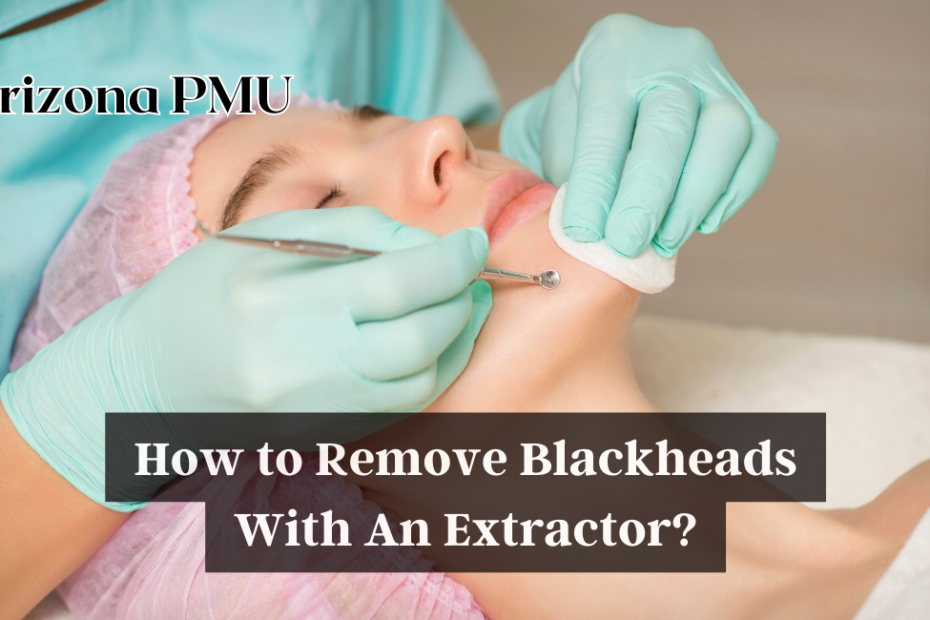Having blackheads on their skin can be an ongoing and annoying problem for many people. While there are several ways to eliminate blackheads, utilising an extractor is a well-liked and efficient method.
In this post, we’ll show you exactly how to remove blackheads with an extractor and how use an extractor for blackheads so that you get the best results possible without harming your skin.
Recognizing Blackheads
Blackheads are tiny dark spots that develop on the skin’s surface and are referred to medically as open comedones. They develop when dirt, dead skin cells, and extra sebum clog pores.
Blackheads are frequently observed on the nose, chin, and forehead regions. Use an extractor to get rid of these tenacious blackheads and clear the pores.
How to Remove Blackheads With An Extractor?
To eliminate blackheads with an extractor, perform the following steps:
Step 1. Cleanse and steam your face to release the pores.
Step 2. Clean the extractor by massaging it.
Step 3. Apply moderate pressure to the blackhead using the extractor’s loop end.
Step 4. Move the extractor over the epidermis to eliminate the blackhead.
Step 5. After cleansing your face, apply an astringent and moisturizer.
Exercise caution, avoid excessive pressure, and maintain appropriate hygiene throughout the process.
Preparing Your Skin
To reduce the danger of infection or skin injury, it is essential to adequately prepare your skin before using an extractor. Adopt these actions:
1. Cleanse Your Face
Cleanse your face by first washing it with a mild cleanser to get rid of any makeup or grime. Dry off your skin with a fresh towel.
2. Steam Your Face
Fill a basin with hot water, lean over it, and cover your head with a cloth to trap the steam as you steam your face. To make it simpler to remove the blackheads, steam your face for 5 to 10 minutes.
Sterilizing The Extractor
It is crucial to properly sanitise the extractor to provide sanitary and safe extraction. This is how:
1. Cleanse The Extractor
To remove any dirt or bacteria, wash the extractor with warm water using antibacterial soap.
2. Sterilize With Rubbing Alcohol
Rub alcohol can be used to sterilise objects. Soak a cotton ball in the liquid, then use it to gently clean the extractor. This process assists in getting rid of any leftover bacteria and lowers the chance of infection.
Apply Light Pressure
Applying regular, delicate pressure is essential when using the extractor to prevent injury to your skin. Adopt these actions:
1. Position The Extractor
Hold the extractor so that the loop end is wrapped around the blackhead you want to remove.
2. Apply Gentle Pressure
Apply light pressure by softly pushing against the skin while tucking the loop end around the blackhead. Avoid overusing force to avoid bruising or scars.
Taking Away The Blackheads
After using light pressure, you may now start to extract the blackheads. Adopt these actions:
1. Slide The Extractor
To remove the blackhead, carefully slide the extractor over your skin’s surface. Avoid scraping or digging the skin.
2. Repeat If Necessary
Do not force the blackhead to come out if it does not want to. Continually go on to the next blackhead, then try again later. Skin injury might result from forced extraction.
After-Extraction Support
To encourage healing and stop further blackheads, it is crucial to take care of your skin after using the extractor. Follow this advice for after-extraction care:
- To thoroughly clean your face, run a cool water rinse over it to eliminate any extraction-related residue. Gently pat yourself dry.
- Use a toner on your skin type to reduce pore size and stop further blackhead formation.
- Apply a thin layer of non-comedogenic moisturiser on your skin to keep it nourished without clogging pores.
- When utilising an extractor, it’s critical to exercise caution and steer clear of typical blunders. Following are some errors to avoid:
- Utilising contaminated or unsterilized extractors: Always make sure your extractor is sanitised and clean before using.
- Putting too much pressure: Using too much force can result in bruising, scarring, and injury to the skin. Be patient and kind.
- Blackheads are the only flaws that an extractor is intended to remove. Avoid applying it on other blemish types, including cysts or pimples.
Conclusion
To get clearer skin, utilising an extractor for blackheads can be useful. You may effectively and securely eliminate blackheads from your skin according to the step-by-step instructions provided in this article.
Remember to prepare your skin, clean the extractor, press gently, and practise post-extraction treatment. Say goodbye to tenacious blackheads and hello to a clearer complexion by including these procedures in your skincare regimen.
Thanks for visiting our site ..
FAQs
Q1. Can I Remove Blackheads Using My Fingers?
Using your fingers is not advised since they might spread bacteria and irritate the skin. Better control and sanitation are provided by an extractor.
Q2. When Ought I To Utilise An Extractor?
To avoid skin damage and irritation, only use an extractor once or twice a week at most.
Q3. Is The Redness On My Skin After Extraction Normal?
Yes, a little bit of redness is typical and should go away in a day or two. Consult a dermatologist if the redness continues or gets worse.
Q4. Can Someone With Sensitive Skin Use An Extractor?
Yes, but be extra careful and make sure you’re touching gently. Take into account seeking out specialised guidance from a dermatologist.
Q5. Can You Get Rid Of Blackheads Without Using An Extractor?
There are substitutes, such as pore strips, exfoliating masks, or consulting a physician or esthetician for advice.
Learn more: Which Is Better Phloretin CF Or Ferulic CE?
